The pandemic saw a boom in popularity for e-racing/training, with Zwift leading the way in popularity for indoor cycling training platforms. With restrictions in place in most countries throughout the world last year there was a big increase in people taking to their bikes indoors embracing the online training tool. There are lots of benefits to using these platforms, and even the opportunity to get your competitive fix with a huge selection of races taking place on a daily basis.
There are a number of different ways to approach training on Zwift, and while there are plenty of benefits, particularly as we are still in the throes of the cold, dark, and wet, winter months in Ireland, there’s still much to keep in mind if you’re planning to race your way to fitness and increased watts over the coming months.
It’s certainly more appealing to hop on the turbo during the dark days of winter to avoid the typical Irish or UK weather and get your cycling fix. However, whilst it might be a little easier mentally to set up in your bib-shorts in your kitchen or spare room, consider whether or not the room temperature is ideal for what you’re about to undertake.
Lack of air flow through the room will result in less heat being removed from the body. This in turn leads to increased core temperatures and increased sweating. As its temperature increases, your body will begin to expend more energy trying to keep itself cool, leaving less energy for the session or race at hand. Heart rates tend to rise when the body is under stress in warmer and more humid conditions. This can influence your session or race, it can also influence the amount of time your body might need to recover after a hard session.
So, yes, the indoor turbo session might seem appealing as we seek to dodge the cold and wet winter days, but make sure to either use a fan or two, or open up all the windows that you can in order to ensure you don’t over heat as you power up the watts.
The airflow you experience when cycling outdoors helps to move heat away from the body’s surface, making your sweat rate less obvious to you. When indoors, you’re more likely to notice an increase in your sweat due to the lack of airflow through the room.
Dehydration can lead to significant drops in performance for endurance athletes. Therefore, ensuring you are adequately hydrated for your session will help you complete it effectively and maximise your recovery post session.
The intensity and length of session will influence your hydration strategy, as will your physiology. Some people naturally sweat more than others, however showing up hydrated to the session is a good start.
To look at it very simply, heavy sweaters will need to consume more fluids throughout their sessions. Those who find they have salt stains on their kit after a tough session may need to consume sodium with their fluids during the session. Keep it simple during your session and drink to thirst. Make sure you consume plenty of fluids after your session to help you recover as well as possible.
When you’re out on the road on your bike, you’ll tend to let your position on the bike vary. This is natural in order to respond to the conditions, route, traffic, or other riders around you. It might seem beneficial to spend all of your time in your race position on the turbo, however, unless you are used to spending prolonged periods of time in this position from your racing season and training this year, let yourself move around every now and then and be sure to check your bike fit and adjust as required on the turbo.
Are you balancing your indoor training with outdoor rides to make sure you’re still handling your bike well on the road? Braking, cornering, and reacting to any changes in the road surface are all aspects you will need to consider during your ‘in real life’ racing. Don’t neglect staying on top of your bike handling skills if you are spending lots of time on the turbo. You might have found the perfect position for your racing and have adapted very well to it indoors, if you aren’t confident or adequately skilled at handling your bike come race day, that perfect position will mean much less!
Are you already following a structured training programme? Does it include e-racing events? If not, be wary of how often you choose to race on platforms like Zwift. Zwift racing is intense, there’s no other word for it. Out on the road you might be able to draft for period of time and conserve some energy. While Zwift does provide for drafting, anyone who’s raced on the platform will tell you it doesn’t give you the same capacity to save energy as doing so on the road would.
If you have a coach, are they managing your load around these races? If you’re following a generic plan from Zwift, TrainingPeaks, TrainerRoad etc., without a personalised plan you’ll need to take into consideration the extra stress Zwift racing will put on your body.
If you’re training for endurance events, such as an IRONMAN, the recovery time from one of these intense e-racing events is likely to be substantially longer than the majority of your sessions. The majority of which will likely be lower intensity sessions allowing you to accumulate a larger training volume over time.
With Triathlon Ireland and the WTRL leagues in full swing at the moment it’s important to make sure there is balance in your training plan if you’re taking part in these events.
Regardless of your level of addiction to Zwift and other indoor training platforms, have fun with it and enjoy the increased power and performance you will gain from time spent in the saddle indoors.
